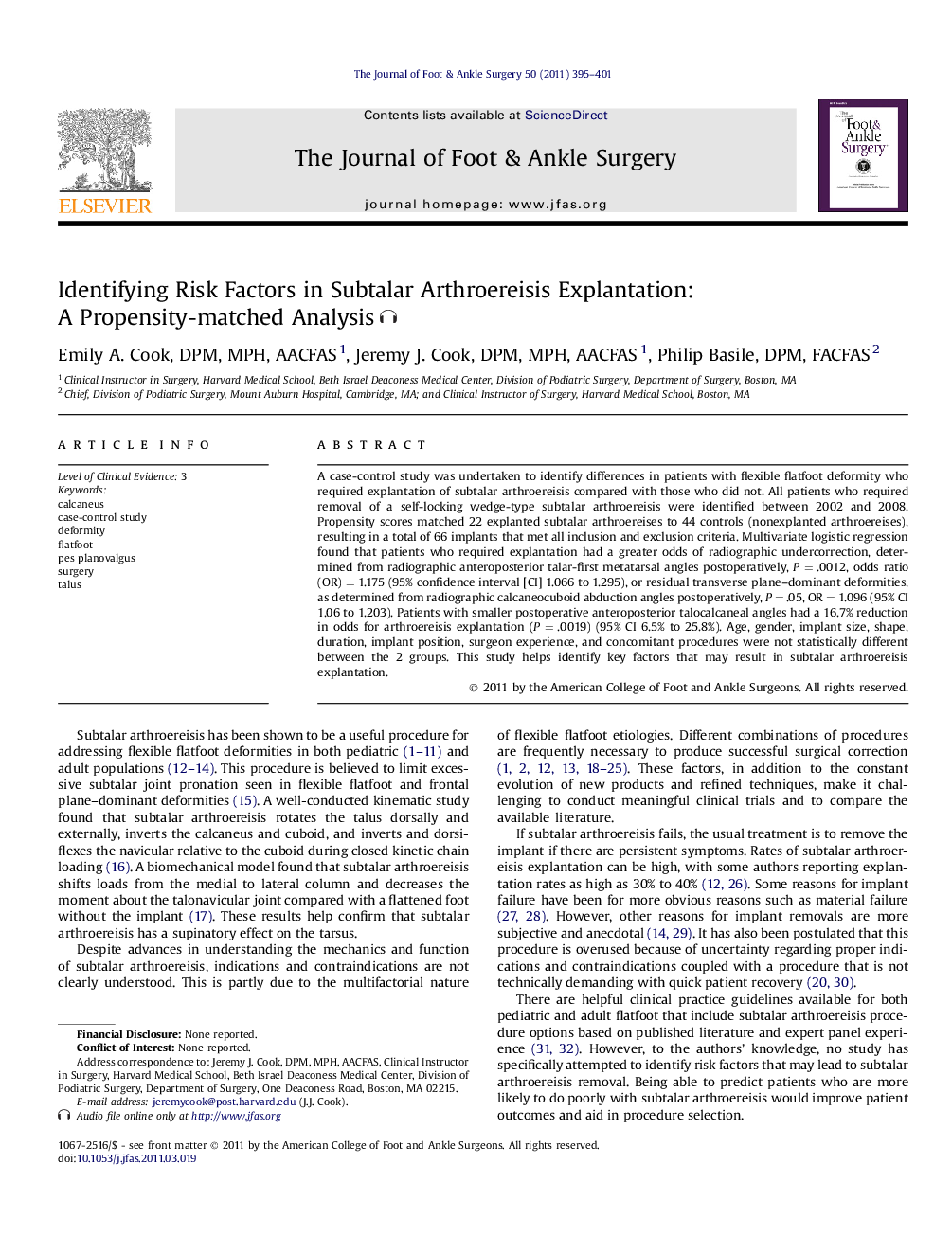| کد مقاله | کد نشریه | سال انتشار | مقاله انگلیسی | نسخه تمام متن |
|---|---|---|---|---|
| 2715634 | 1565552 | 2011 | 7 صفحه PDF | دانلود رایگان |

A case-control study was undertaken to identify differences in patients with flexible flatfoot deformity who required explantation of subtalar arthroereisis compared with those who did not. All patients who required removal of a self-locking wedge-type subtalar arthroereisis were identified between 2002 and 2008. Propensity scores matched 22 explanted subtalar arthroereises to 44 controls (nonexplanted arthroereises), resulting in a total of 66 implants that met all inclusion and exclusion criteria. Multivariate logistic regression found that patients who required explantation had a greater odds of radiographic undercorrection, determined from radiographic anteroposterior talar-first metatarsal angles postoperatively, P = .0012, odds ratio (OR) = 1.175 (95% confidence interval [CI] 1.066 to 1.295), or residual transverse plane–dominant deformities, as determined from radiographic calcaneocuboid abduction angles postoperatively, P = .05, OR = 1.096 (95% CI 1.06 to 1.203). Patients with smaller postoperative anteroposterior talocalcaneal angles had a 16.7% reduction in odds for arthroereisis explantation (P = .0019) (95% CI 6.5% to 25.8%). Age, gender, implant size, shape, duration, implant position, surgeon experience, and concomitant procedures were not statistically different between the 2 groups. This study helps identify key factors that may result in subtalar arthroereisis explantation.
Journal: The Journal of Foot and Ankle Surgery - Volume 50, Issue 4, July–August 2011, Pages 395–401